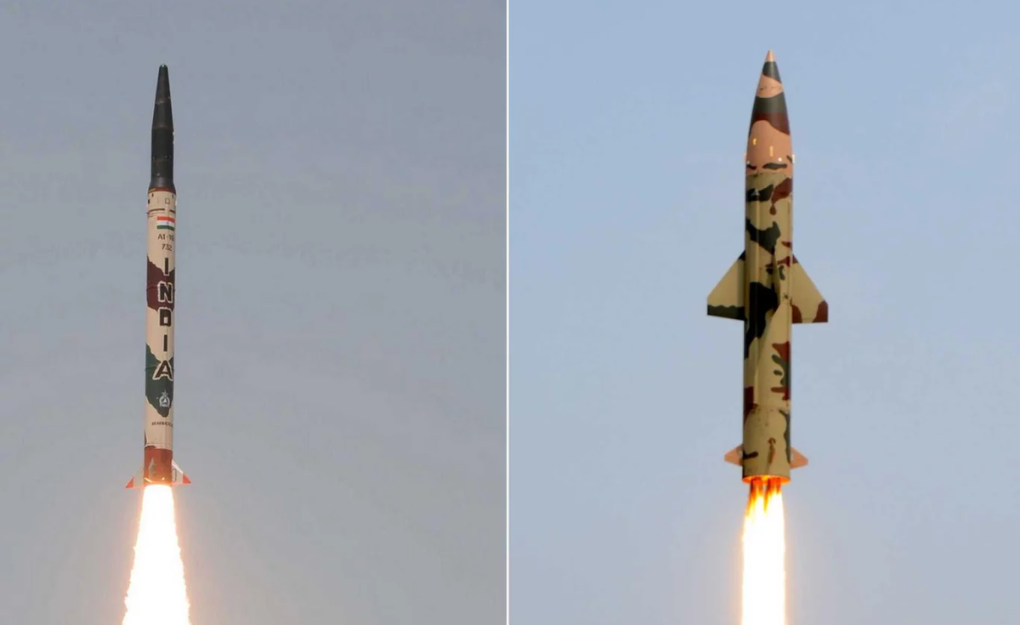In a significant stride for national security, India successfully conducted the Prithvi-II and Agni-I tests, reaffirming its strategic deterrence posture. These nuclear-capable short-range ballistic missiles were test-fired from the Integrated Test Range (ITR) off the coast of Odisha. Alongside, the Akash Prime missile was tested at high altitudes in Ladakh, marking a new chapter in indigenous air defence capabilities close to the Line of Actual Control (LAC).
The Prithvi-II and Agni-I tests are part of India’s ongoing efforts to validate its missile readiness and to reinforce the effectiveness of its Strategic Forces Command (SFC), which oversees the country’s nuclear arsenal. These successful launches not only serve operational purposes but also act as a powerful message amid ongoing regional tensions.
Prithvi-II Missile Test: A Key Component of Short-Range Deterrence
The Prithvi-II missile, developed by the Defence Research and Development Organisation (DRDO), is a single-stage liquid-fueled ballistic missile. With a range of approximately 350 km, it can carry a warhead weighing up to 500 kg, capable of delivering both conventional and nuclear payloads.
This recent test of Prithvi-II was conducted during nighttime under stringent conditions to simulate real-time warfare scenarios. The missile met all required mission objectives, validating its operational readiness and accuracy. As a frontline component of India’s short-range strike capability, Prithvi-II strengthens quick-response measures against nearby threats.
Agni-I Missile Test: Strengthening Medium-Range Capabilities
Agni-I, another indigenously developed ballistic missile, has a range between 700 and 900 km and can carry payloads of up to 1,000 kg. Designed to bridge the gap between the shorter-range Prithvi missiles and the longer-range Agni-II and Agni-III, Agni-I enables strategic targeting with a high level of precision.
The successful Agni-I test confirmed the missile’s reliable performance under operational conditions. It is a cornerstone of India’s minimum credible deterrence doctrine, ensuring that the country maintains a robust retaliatory capability in the face of nuclear threats.
Akash Prime Missile Tested in Ladakh: Boost to Indigenous Air Defence
While the Prithvi-II and Agni-I tests showcased India’s offensive readiness, the Akash Prime missile test highlighted advances in defensive technology. Conducted in the high-altitude region of Ladakh, the Akash Prime successfully intercepted and destroyed two high-speed unmanned aerial targets.
An upgraded version of the original Akash surface-to-air missile, the Akash Prime features an indigenously developed radio frequency (RF) seeker, which greatly enhances accuracy and engagement range. The successful test in extreme terrain and weather conditions confirms its suitability for deployment in India’s challenging northern borders.
This test is particularly significant considering ongoing tensions along the LAC with China, demonstrating India’s preparedness to defend high-altitude regions with precision-guided indigenous systems.
Strategic and Defence Significance of the Tests
The Prithvi-II and Agni-I tests, under the Strategic Forces Command, align with India’s strategic doctrine of credible minimum deterrence. These tests are not merely technical evaluations but serve as strategic signaling tools. They assure the readiness of India’s nuclear forces and act as deterrence amid increasing geopolitical volatility in South Asia.
Defence Minister Rajnath Singh lauded the successful tests, crediting the DRDO, the armed forces, and Indian industry partners for their collaborative efforts. These launches underscore the increasing competence of India’s defence manufacturing ecosystem and its commitment to Atmanirbhar Bharat (self-reliant India).
Indigenous Development and the Road Ahead
The Akash Prime’s successful deployment is a testament to India’s focus on indigenous defence technology development. The DRDO has incorporated feedback from previous field deployments to upgrade key components, such as the seeker, fuse mechanism, and mobility platforms. These improvements enhance operational reliability and reduce dependency on imported systems.
The broader significance of these missile tests also lies in India’s efforts to create a robust domestic military-industrial complex, capable of addressing both conventional and unconventional threats. The Prithvi-II and Agni-I tests, combined with air defence advancements like the Akash Prime, contribute to an integrated defence strategy aimed at ensuring security on all fronts—land, air, and nuclear.
Conclusion
The recent Prithvi-II and Agni-I tests, along with the Akash Prime missile launch in Ladakh, mark a defining moment for India’s strategic defence capabilities. These actions reinforce deterrence, strengthen border security, and validate the indigenous technological edge that India is steadily cultivating. As regional security dynamics continue to evolve, such demonstrations of strength will remain crucial to safeguarding India’s sovereignty and global strategic interests.




